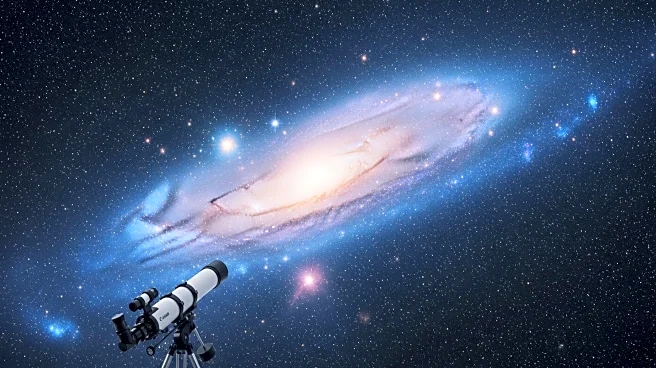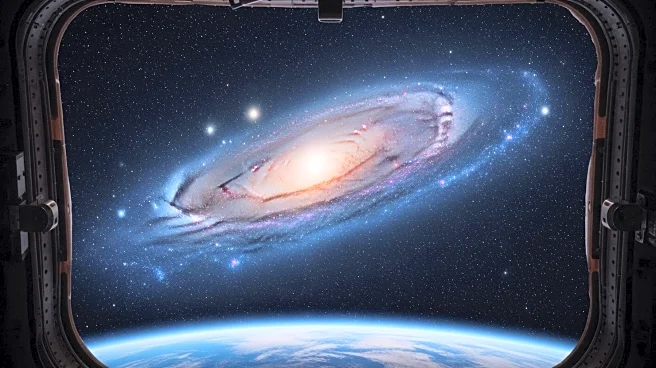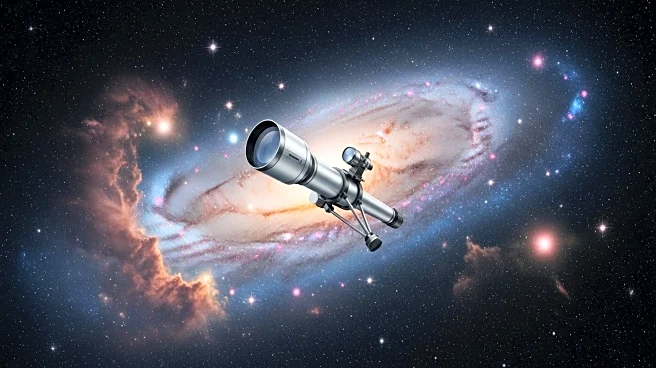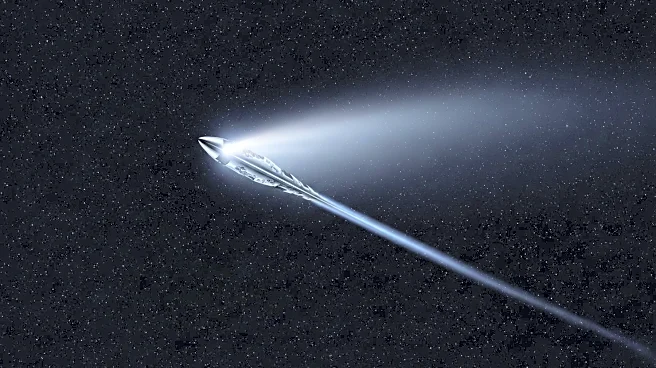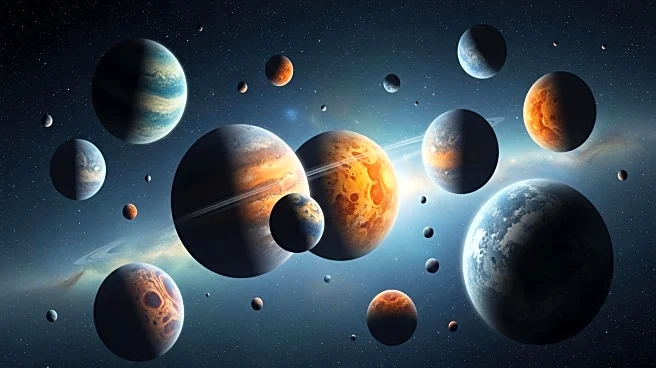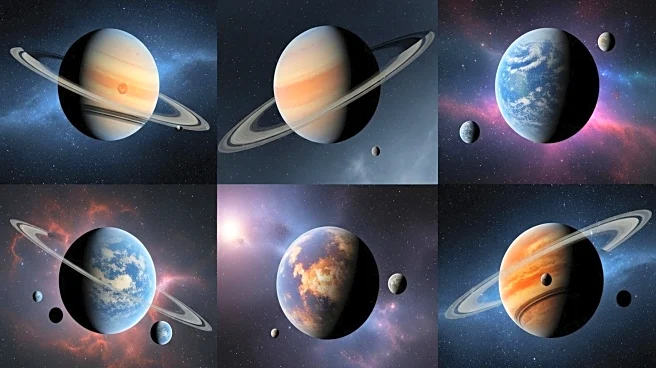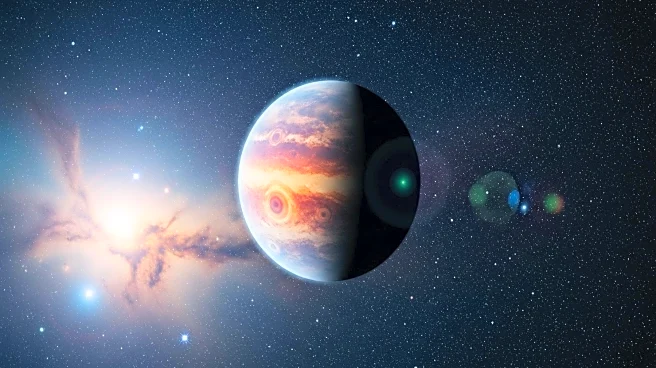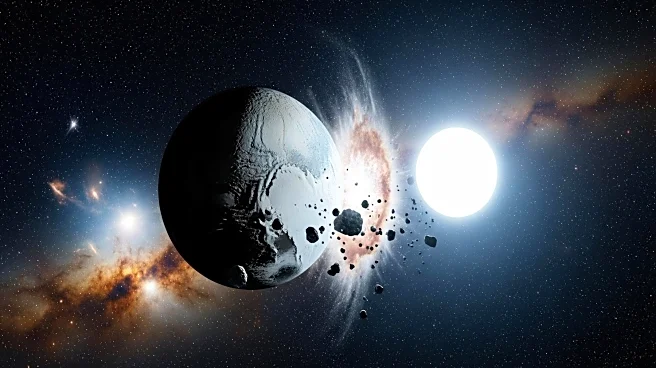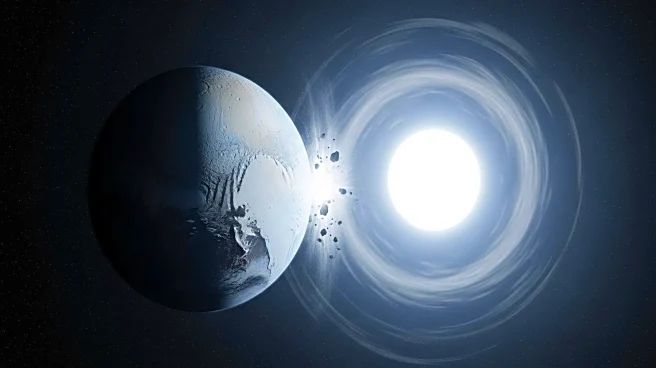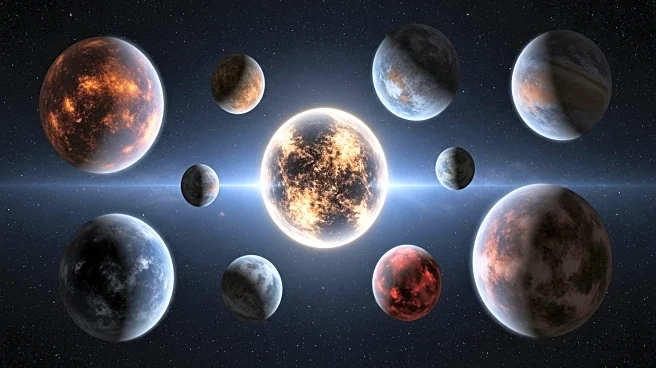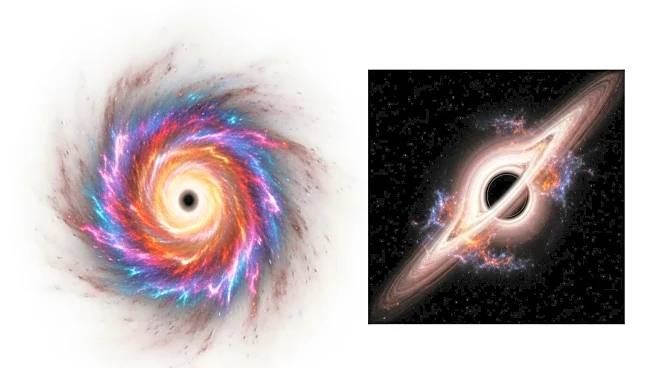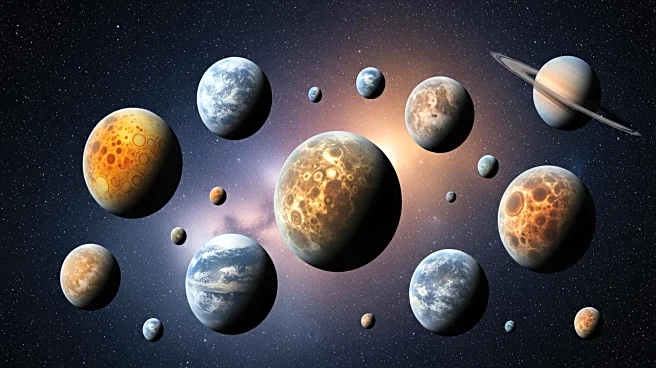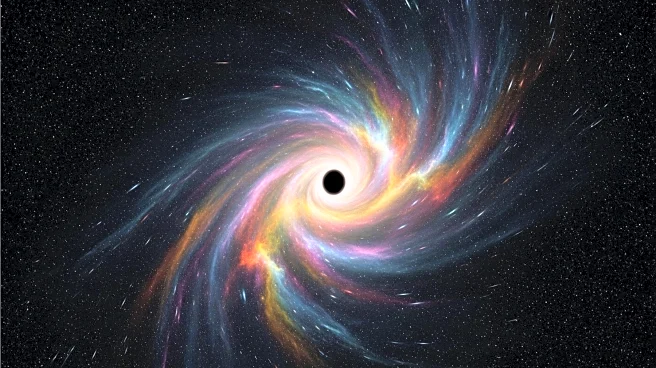What is the story about?
What's Happening?
NASA has announced the confirmation of its 6,000th exoplanet discovery, marking a significant milestone in the search for planets beyond our solar system. This achievement reflects the efforts of telescopes like Kepler and TESS, which have contributed to the identification of diverse alien worlds, including hot Jupiters and potential ocean planets. The discovery aids scientists in understanding the prevalence of Earth-like planets and the potential for habitable 'Goldilocks' zones. Additionally, astronomers have measured the recoil of a newly merged black hole, observing its motion at over 50 km/s, a feat that provides insights into black hole dynamics and gravitational waves.
Why It's Important?
The confirmation of 6,000 exoplanets is crucial for advancing our understanding of planetary systems and the potential for life beyond Earth. Each discovery offers insights into the formation and characteristics of planets, helping scientists assess the likelihood of finding habitable environments. The measurement of black hole recoil enhances our knowledge of gravitational wave phenomena and the behavior of black holes post-merger, contributing to the field of astrophysics and validating aspects of Einstein's theories. These developments underscore the importance of continued investment in space exploration and research.
What's Next?
NASA and other space agencies will continue to explore and analyze exoplanet data to identify potential habitable zones and further understand planetary diversity. The study of black hole dynamics will progress with improved gravitational wave detectors, allowing for more detailed observations and reconstructions of cosmic events. These efforts will guide future missions and research initiatives aimed at uncovering the mysteries of the universe and potentially identifying signs of extraterrestrial life.
AI Generated Content
Do you find this article useful?
